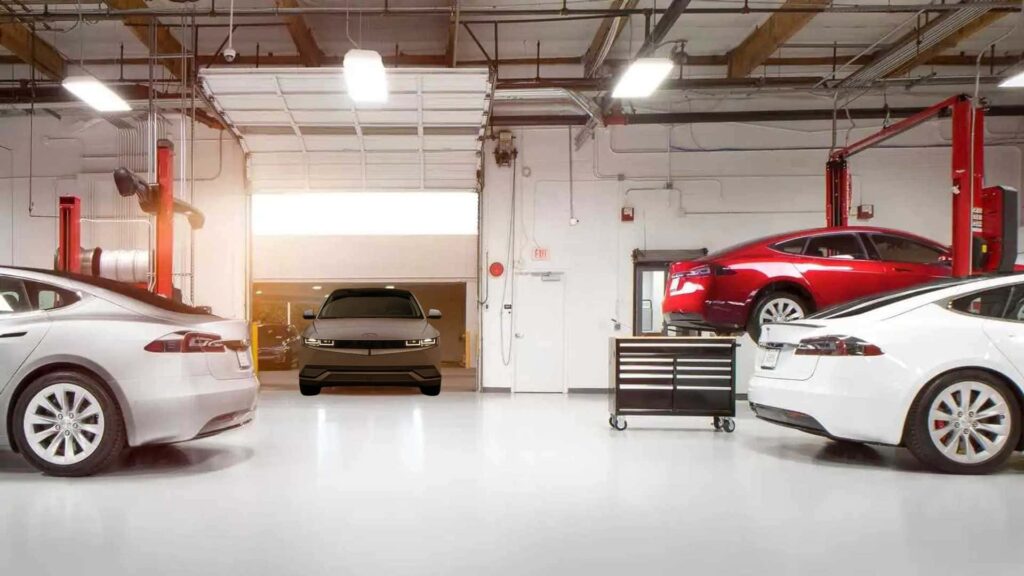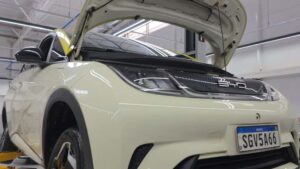
- Electric cars made in the last five years have a much lower breakdown rate than their combustion counterparts.
- The data comes from Germany’s ADAC, the largest automobile association in Europe.
- ADAC offers roadside assistance to its members and collects data about breakdowns.
Electric cars are a lot less complicated than their combustion-powered counterparts, at least when it comes to the number of moving parts and maintenance needs. There are almost no liquids to change and the brake pads can last hundreds of thousands of miles, but they often need specialized service technicians to figure out how to repair them when something goes wrong.
We’ve featured numerous studies about EV reliability in the past. Now, it’s time to look at the breakdown rate of battery-powered cars and compare it to gas- and diesel-powered vehicles.
Thanks to the German Automobile Club (ADAC), there is now a good amount of data regarding the need for roadside assistance for EVs. To be clear, the results below are not synonymous with reliability. Because of the way the ADAC works, this is a statistic about breakdowns per 1,000 vehicles.
Let’s get the big tamale out of the way first. On average, electric vehicles built between 2020 and 2022 had a breakdown rate of 4.2 out of 1,000 vehicles, whereas combustion cars were considerably higher at 10.4 per 1,000.
The good news is that, irrespective of the powertrain, the breakdown rate is steadily decreasing. In 2020, EVs had 8.5 breakdowns on average, while combustion cars had 12.9. These figures went down to 4.3 for EVs in 2021 and 1.7 in 2022, while combustion-powered vehicles had an average breakdown rate of 8.2 in 2021 and 5.4 in 2022.
Now for the better news: the biggest culprit by far for most EV breakdowns was the same. That would be the low-voltage battery, which is pretty much identical in both EVs and combustion cars. Some hardcore EV enthusiasts are no strangers to this issue, and we’ve covered this extensively in a standalone piece. This is a welcome relief for EV owners who are worried about something big failing in their expensive car, like the high-voltage battery.
- 12-volt battery: 50%
- Motor, Motor management, high-voltage system: 18%
- Tires: 13%
- Generator, Starter, Electrical System, Lighting: 10%
- Keys, Immobilizer: 3%
- Other: 5%
- 12-volt battery: 45%
- Generator, Starter, Electrical System, Lighting: 23%
- Motor, Motor management, high-voltage system: 10%
- Tires: 8%
- Keys, Immobilizer: 7%
- Other: 7%
A quick glance over the results published by the ADAC shows that most EVs have had few breakdowns, with the exception of the Hyundai Ioniq 5, which breaks the mold with a rather disappointing breakdown rate of 18.3 for cars built in 2021. To make matters worse, the units manufactured in 2022 had a breakdown rate of 22.4.

The 2022 Hyundai Ioniq 5 had the highest breakdown rate of any EV on ADAC’s list.
The Tesla Model Y, the biggest rival of the Ioniq 5, had a breakdown rate of just 0.9 for cars built in 2022. The Model 3 saw its breakdown rate gradually go down from 4.4 for 2019-built units to just 0.5 for cars manufactured in 2022. Volkswagen’s ID.4 is also a solid contender with just 1 breakdown per 1,000 vehicles for 2022-built models. Even the humble Dacia Spring, which costs less than half the price of the Hyundai Ioniq 5, had a breakdown rate of 2.9 for 2022-built units.
Overall, the ADAC says that it had to respond to fewer calls from EV owners because “many of the initial problems and weaknesses that electric vehicles had in the early years have now been resolved through the manufacturers’ learning process.” The club also noted that even though there are some outliers, the sheer diversity and general sturdiness of electric vehicles on the German market is enough to lead to a decrease in the overall breakdown rate.



